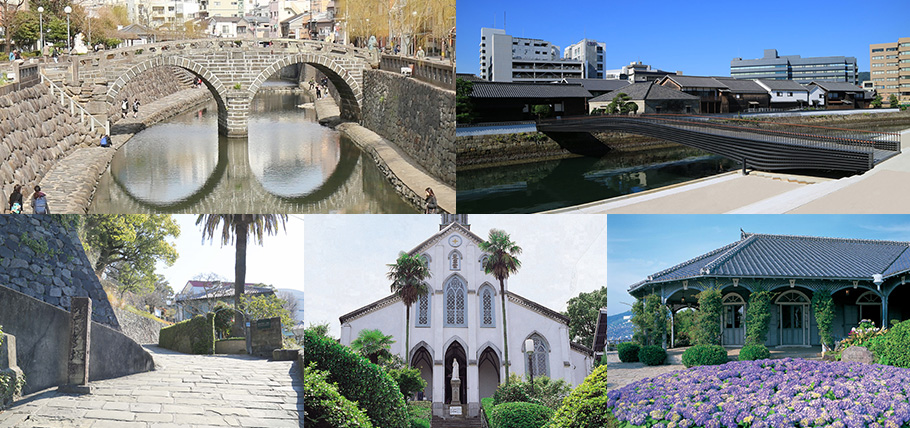Glover Garden Course (3 hours)

Nagasaki flourished as a center of the Nanban trade after a Portuguese ship entered the port in 1571. After the Edo period (1603-1867), the city continued to introduce foreign cultures, centering on Dejima, and over time, Japan developed from the city of Nagasaki. Many foreigners, such as Siebold and Glover, were active in Nagasaki. Many great men such as Ryoma Sakamoto were drawn to Nagasaki by its charms. This course is designed for visitors to know and enjoy the exotic and exotic Nagasaki, where various dramas unique to a port town were born.
Minimum number of applicants: 3 (for visitors to Japan: 4)
*If you have children under 12 years old, please enter their ages and the number of children in the "Communication" field.
departure time
| 1 | Departure 9:00 Return 12:00 (tentative) |
|---|---|
| 2 | Departure 13:00 Return 16:00 (tentative) |
Course Content
| 09:00 (13:00) | Departure: Nagasaki Station area |
| 09:10 (13:10) | (1) Megane Bridge |
| 09:30 (13:30) | (2) Dejima |
| 10:15 (14:15) | Holland Slope (from car window) |
| 10:25 (14:25) | 4) Oura Tenshudo |
| 10:50 (14:50) | 5) Glover Garden |
| 12:00 (16:00) | Arrival: Nagasaki Station area |
Tour Fees
one person5,400Yen (incl. tax)Highlights of this course
-
(1) Megane Bridge
The first double-arched stone bridge in Japan, built over the Nakajima River by Zenji Mokuko Nyosei, the second head priest of Kofukuji Temple. Although the bridge was partially destroyed by the flood that hit Nagasaki in 1982, it has been restored and is a favorite recreational spot for citizens along with the park. Please also see the information board describing the origin of the bridge. -
(2) Ruins of Dejima Japanese and Dutch Trading Post
Dejima was a small fan-shaped artificial island with an area of 13,000 m2 built in 1636 by the Edo Shogunate, which was concerned about the spread of Christianity, to isolate Portuguese people. Today, visitors can take a leisurely stroll along the Nakajima River, where there is a museum and a miniature Dejima. -
Holland Slope (from car window)
At the time of the opening of the port, Westerners in Nagasaki were called "Holland-san" and all the stone-paved slopes in the foreign settlement area were called "Holland Slope". Each of the cobblestone slopes in Higashiyamate and Minamiyamate has its own expression and can be enjoyed, but the slope in front of Kassui Women's College is particularly famous for its exotic atmosphere. -
4) Oura Tenshudo
This Tenshudo was built in 1864 to honor the spirits of 26 saints, the first martyrs in Japan, and is officially called the "Martyrs' Cathedral of the 26 Saints of Japan. It is the oldest existing wooden Gothic-style church in Japan and was designated as a national treasure in 1933. -
5) Glover Garden
The Minamiyamate area is lined with Western-style buildings, giving it an exotic atmosphere. Glover Garden is located in such a place. The Glover Residence, designated as a National Important Cultural Property, and the Ringer and Alt Residences, designated as National Cultural Properties, are located in this area. Surrounding them are beautiful gardens overflowing with water and greenery. You can enjoy the exotic atmosphere unique to Nagasaki.